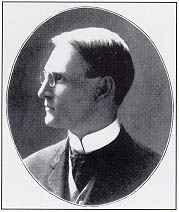August 31
| 1907 | OPR issues Bulletin No. 32, Public Road Mileage, Revenues, and Expenditures in the United States in 1904.Compiled by Chief of Records M. O. Eldridge, the report is based on 60,000 letters sent out and reports received from every county in the U.S.--the first such compilation. The Nation has 2,151,570 miles of public roads outside cities, plus 1,598 miles of stone-surfaced toll roads. Only 153,662 miles had any kind of surfacing (defined as earth, gravel, stone, shells, and sand-clay). Total expenditures on roads in 1904 were $79.77 million; the States expended only $2.6 million of this amount.
| |
| 1924 | About 26 miles west of Missoula, MT, construction begins on a novel grade separation project designed by BPR. The completed structure carries the Yellowstone Trail under a railroad bridge and over 9-Mile Creek. The superstructure of the highway bridge is a reinforced concrete girder, 50-foot channel span with 36-foot approach spans on a skew of 40 degrees, which gives sufficient clearance from the foundations of the railroad bridge and maximum stream clearance. The bridge, which contains 306 cubic yards of concrete, costs $12,019. The project is completed in April 1925. | |
| 1991 | Today, in Auburn, CA, BPR retirees meet for the 16th annual reunion of friends, associates, and families who met while working in BPR District 2 in San Francisco. Friendships begun 60-odd years ago, many while the engineers were in the field surveying or working on construction projects in National Forests and National Parks, had continued through the years of family building and moving around the country on BPR assignments. The first reunion, at the invitation of Mr. and Mrs. Linwood L. Clark, took place in August 1976 with a good attendance of old friends, although by then, according to Clark, some of the engineers could not attend because they were instead working for "St. Peter or Satan." He adds that, "Our group is getting smaller each year, but considering that most of us older retirees are in their 70s and 80s we think ourselves pretty fortunate." |

